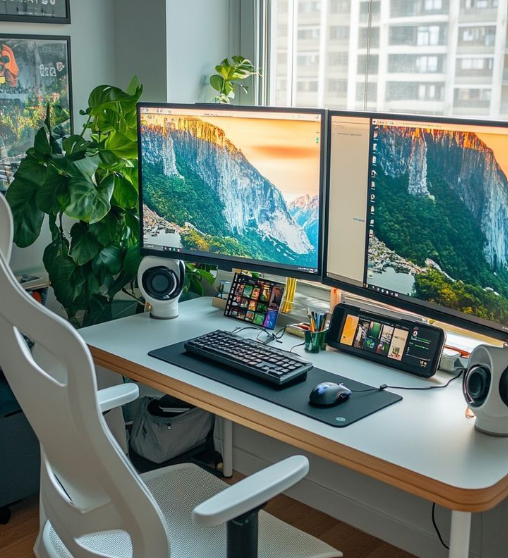Minimalism is more than just owning fewer things,it’s about creating freedom. For digital nomads, that freedom is essential. The more you carry, the heavier your life feels, and the harder it becomes to move seamlessly between cities, countries, and opportunities. But if you strip away too much, you risk feeling unprepared, disorganized, or constantly needing to replace essentials on the road.
So, how do you build a minimalist nomad setup that actually works lean enough to keep you light, but complete enough to support your lifestyle? Here’s a framework you can use.
1. Start with the Core: The Right Bag
Your entire life might fit in 30–40 liters, so choosing the right bag is non-negotiable.
- Backpack over suitcase: A high-quality carry-on backpack makes it easier to cross borders, hop on buses, or walk across cobblestone streets.
- Features to look for: Durable zippers, weather resistance, laptop compartment, and a sleek design that doesn’t scream “tourist.”
Pro tip: A 35–40L backpack forces discipline,big enough for essentials, small enough to avoid overpacking.
2. Tech: Your Portable Office
As a nomad, your income depends on your gear. You don’t need everything, just the right things.
- Laptop: Lightweight but powerful enough for your work (MacBook Air, Dell XPS, or similar).
- Phone: Dual SIM or eSIM support to handle international networks.
- Headphones: Noise-canceling for flights, cafés, and hostels.
- Power: Universal adapter, compact power bank, and a minimal charging setup (USB-C everything if possible).
- Optional add-on: A foldable Bluetooth keyboard if you work long hours on your phone.
3. Clothing: The 80/20 Rule
Clothes take up the most space. Pack for versatility, not variety.
- Neutral colors: Black, grey, navy, and white mix easily.
- Quick-dry fabrics: Wash in a sink, hang overnight, wear again tomorrow.
Capsule wardrobe formula:
- 3–4 t-shirts
- 2 pairs of pants/shorts
- 1 lightweight jacket
- 1 pair of sneakers (walk + gym)
- 1 pair of sandals/slides
- 5–7 pairs of socks & underwear
Pro tip: If you can wear every item with every other item, you’ve nailed it.
4. Essentials You Can’t Skip
Minimalism doesn’t mean neglecting life’s basics.
- Documents: Passport, digital + physical copies, backup ID.
- Health: Compact first-aid kit, vitamins, basic meds.
- Finance: Multi-currency debit/credit card, backup payment method.
- Toiletries: Refillable bottles, solid shampoo/soap to avoid spills.
5. Go Digital, Not Physical
- Paper, books, and bulky extras weigh you down.
- Use cloud storage for documents.
- E-books or audiobooks replace physical books.
- Digital journals (Notion, Evernote) replace notebooks.
- Travel apps (Google Maps offline, XE currency converter, Duolingo) cut friction.
6. Mindset: Minimalism Is Discipline
The real key isn’t the bag or the tech,it’s your ability to let go. Many nomads sabotage themselves by buying “just in case” gear or souvenirs they never use. The minimalist nomad setup works only if you:
- Buy only what you need.
- Replace, don’t add (if you buy new shoes, toss the old ones).
- Regularly audit your setup,if you haven’t used it in 30 days, it’s probably excess.
Final Thoughts
Minimalism isn’t about suffering or being underprepared. It’s about designing a lean, functional system that keeps you mobile, flexible, and stress-free. The best minimalist nomad setups look boring on the surface,but they work.
Because when your life fits in one bag, you stop managing stuff and start managing experiences. That’s the real wealth of the digital nomad lifestyle.













